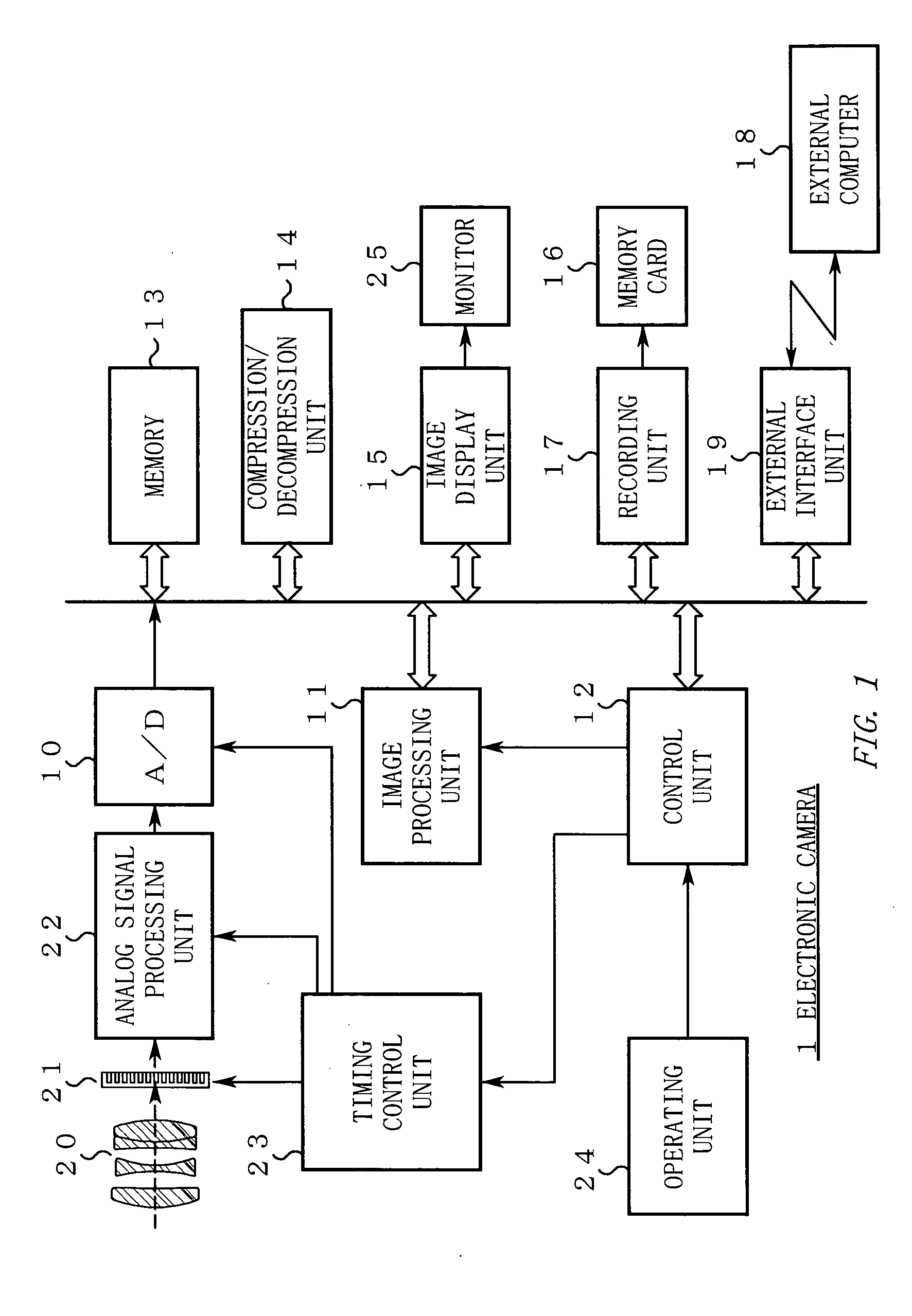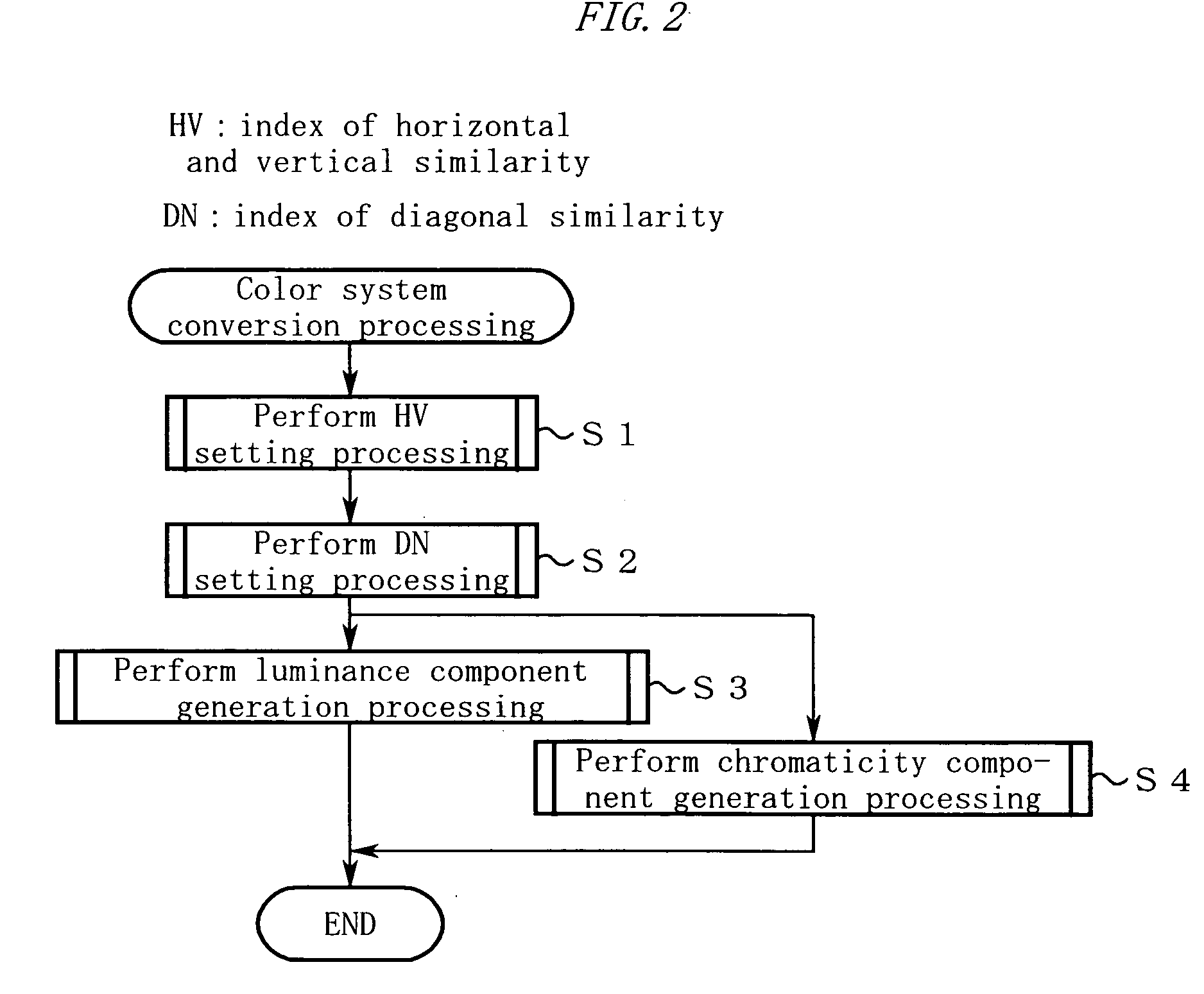Image processing apparatus, image processing program, electronic camera, and image processing method for smoothing image of mixedly arranged color components
- Summary
- Abstract
- Description
- Claims
- Application Information
AI Technical Summary
Benefits of technology
Problems solved by technology
Method used
Image
Examples
first embodiment
Effects and Others of First Embodiment
[0156] As has been described, according to the first embodiment, the groups of coefficient tables having different spatial frequency characteristics are prepared in advance, and the groups of coefficient tables are switched for use in accordance with the analysis of the image structure (steps S43 and S48). As a result, the basically-separated image processes of color system conversion and spatial filtering in consideration of the image structure can be performed by a single weighted addition.
[0157] This eliminates the need to perform the spatial filtering and the color system conversion separately, thereby allowing a significant reduction in time necessary for processing the RAW data.
[0158] Besides, since what is necessary is a single weighted addition, it is also possible to reduce deterioration of image information as compared to the background art where color system conversion and spatial filtering are conducted step by step.
[0159] Moreove...
second embodiment
[0164] The electronic camera (including an image processing apparatus) according to a second embodiment performs color interpolation on RGB Bayer-array RAW data (corresponding to the first image), thereby generating image data that has RGB signal components arranged entirely on each pixel (corresponding to the second image).
[0165] The configuration of the electronic camera (FIG. 1) is the same as in the first embodiment. Description thereof will thus be omitted.
[0166]FIG. 14 is a flowchart for explaining the color interpolation according to the second embodiment. Hereinafter, the operation of the second embodiment will be described along the step numbers shown in FIG. 14.
[0167] Step S61: The image processing unit 11 makes a similarity judgment on a G pixel [i,j] of RAW data to be processed, thereby determining whether or not the location has similarities indistinguishable in any direction, i.e., whether or not the location has high isotropy, having no significant directionality i...
third embodiment
[0189] The electronic camera (including an image processing apparatus) according to a third embodiment performs color interpolation on RGB Bayer-array RAW data (corresponding to the first image), thereby generating image data that has RGB signal components arranged on each pixel (corresponding to the second image).
[0190] The configuration of the electronic camera (FIG. 1) is the same as in the first embodiment. Description thereof will thus be omitted.
[0191]FIG. 17 is a flowchart for explaining color interpolation according to the third embodiment. Hereinafter, the operation of the third embodiment will be described along the step numbers shown in FIG. 17. Step S71: The image processing unit 11 makes a similarity judgment on a G pixel [i,j] of RAW data to be processed, thereby determining whether or not the similarities in all the directions are higher than predetermined levels, i.e., whether or not the location has a high flatness without any significant directionality in its ima...
PUM
 Login to View More
Login to View More Abstract
Description
Claims
Application Information
 Login to View More
Login to View More - R&D
- Intellectual Property
- Life Sciences
- Materials
- Tech Scout
- Unparalleled Data Quality
- Higher Quality Content
- 60% Fewer Hallucinations
Browse by: Latest US Patents, China's latest patents, Technical Efficacy Thesaurus, Application Domain, Technology Topic, Popular Technical Reports.
© 2025 PatSnap. All rights reserved.Legal|Privacy policy|Modern Slavery Act Transparency Statement|Sitemap|About US| Contact US: help@patsnap.com



